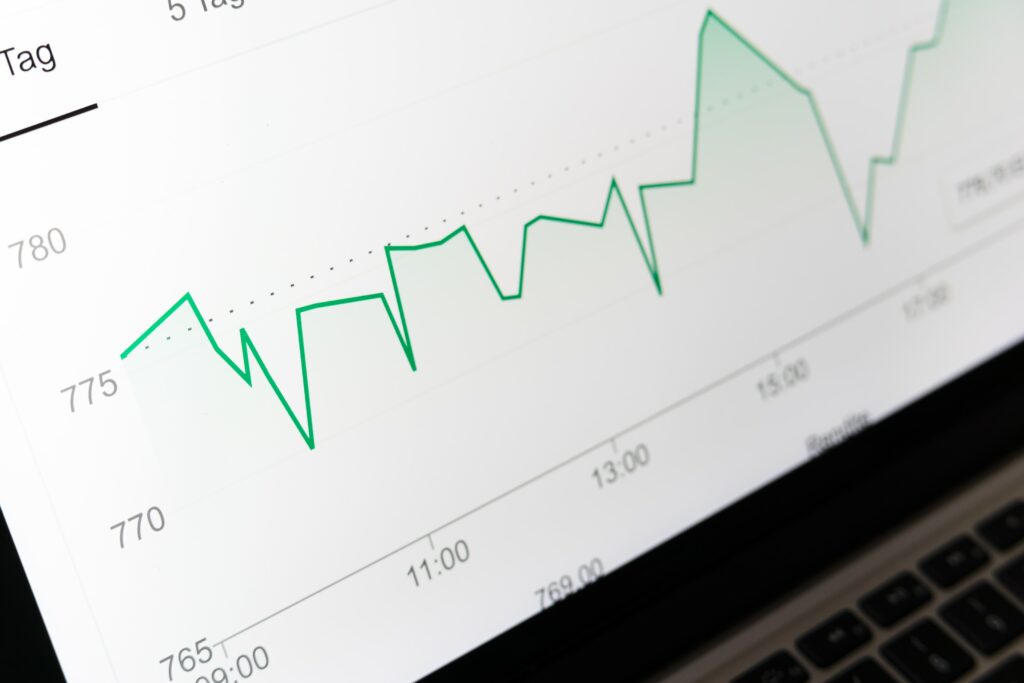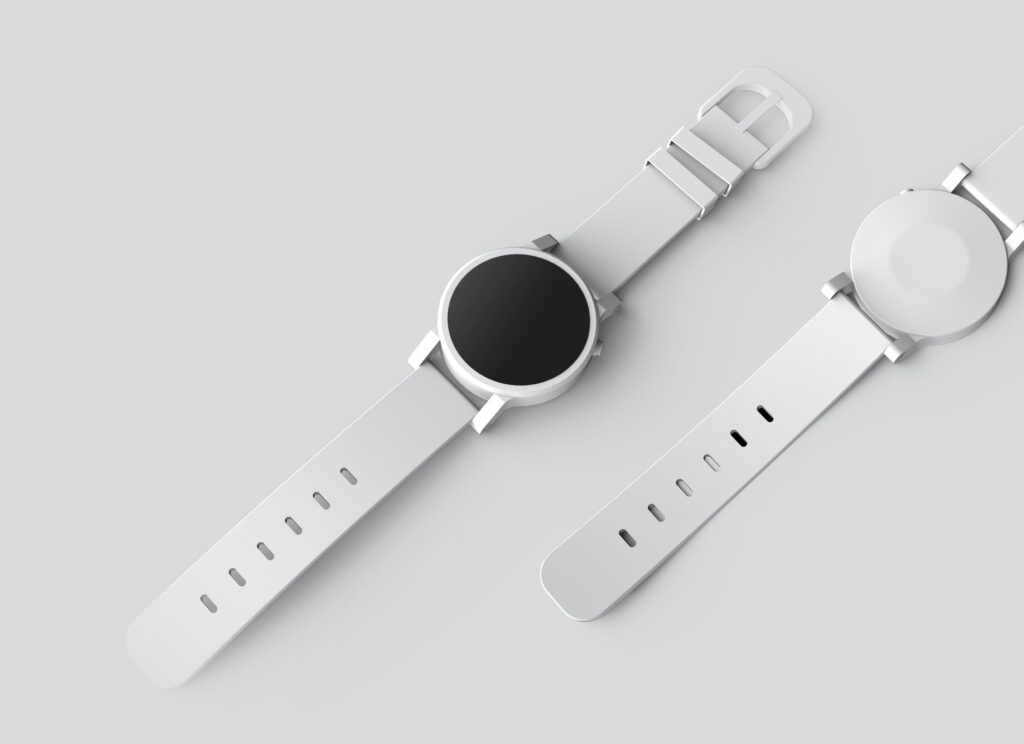When it comes to ecommerce, growth is everything. If your shop is continually getting bigger and better, it is eventually going to be surpassed by competitors in your niche. Once this happens, it can be hard to get customers back. On the Internet, things that are popular tend to remain popular, and it’s difficult to dethrone anything that rules a particular niche. This is especially true in ecommerce.
This begs the question: how does one grow their ecommerce shop? Unfortunately, there’s no perfect answer to this. Growth can arise from a number of things, and the path towards fast growth will look different for every shop. It depends on funding, platform, niche, customer base, and a whole lot of other factors.
But there is one thing that almost all shop owners can use to help grow their online stores: marketing. And let’s not forget that we are living in the future. Traditional marketing methods just don’t work as well as they used to. Buying a billboard for your shop just doesn’t make sense anymore.
So that leaves us with one clear way to grow an online store: email marketing. And if you want to take full advantage of the power of email marketing, you’ll need to make sure that you are adhering to these best practices. Sticking to these methods will help grow your shop into something much bigger than it is today.
Create a perfect subject line
The first thing that any potential is going to see when you send them an email is the subject line. It’s like the bait that you use when you’re fishing. There’s no point in going fishing if your bait is no good, and the same can be said for your subject line. You need to convince the reader that they should open the email that you have sent them. If you can’t do that, you may as well not even send them an email in the first place.
Of course, that might make you ask: how can you create a subject line that is going to convince people to open the email that you have sent them? What can you do to make your subject lines perfect?
As simple as subject lines seem, there are actually a number of things that you need to keep in mind while writing them. Sure, they aren’t essays, but you still need to pay very close attention when creating them.
The first thing that you should have in mind is the fact that subject lines are meant to be short. If you write one that’s too long, readers are going to skim over them and move on. They need to be short enough that they are easy to read while also being just long enough that they communicate all the proper information that you have in mind. This “golden ratio” length is hard to hit, but keep in mind that shorter is usually better.
Another thing: if your subject line is too long, it will get cut off. You want the entire subject line to display, so make sure that it isn’t so long that it won’t be able to be read. The exact length that is displayed depends on the email client that the reader is using, so again, just try to keep it short and sweet.
You should also incorporate some urgency into your subject lines. You don’t need to go as far as those chain emails from the early days of the Internet, but the reader needs to have some reason to care about the email NOW. Think along the lines of “this deal won’t last long!” These statements are simple, but they urge readers to open the emails rather than scroll past them.
Finally, make your subject line creative, professional, and ORIGINAL. Readers can tell when they are being marketed to, so try and take a fun approach. If you use common terms and ideas, readers won’t pay your email any mind.
Build your contact list naturally
Most people don’t really love getting marketing emails in their inboxes, but they will open them up if it’s something that they’re actually interested in. That means that there is little point in emailing people who don’t care about your product, service, or business. Instead, it’s much better to build up a contact list using people who might actually have some sort of connection to your shop.
Let us rephrase what we just said in a much simpler way. DO NOT BUY CONTACTS. Many businesses think that buying email lists is a fast way to get lots of eyes on your business, but it just doesn’t work. The random people who will receive your emails from those lists don’t want your emails, and creating a negative perception of your shop like that won’t help you in the long run. It’s also incredibly hard to actually get any business by using purchased email lists. Just avoid them at all costs.
Okay, now that that’s out of the way, let’s talk about creating a contact list that will actually be useful for you. There are a number of ways to do this. One of the best methods is to ask for the email addresses of your customers when they visit your site. They won’t feel like they are being spammed with your messages if you do this, as they will have willingly given their emails to you. Your contact list will then be made up of people who actually care about your brand and want regular updates.
Of course, sometimes that gentle style isn’t quite enough. If you prefer, you can try some more convincing tactics to get more emails from people that might have otherwise been on the fence about sharing theirs. One common strategy is to offer some variety of discount – say 10$ off – if a customer shares their email.
Asking customers for their email address is also a step that is included in many shops’ checkout processes. If you do not already include this step, you can consider adding it if you want more customers to add to your email list. It’s a great idea to do so, as you can then email them their receipts. You can also include a checkbox at the bottom that allows shoppers to opt in or out of email campaigns. Many customers prefer this added touch.
At the end of the day, you really only want to be emailing people who care about your shop. So don’t take shortcuts. Build your contact list slowly and naturally. It will be better in the long run.
Don’t forget the unsubscribe button
There are few things more annoying than companies who just send incessant emails without offering a clear way to unsubscribe. From the company’s perspective, they think that this will get more people to open their emails and buy things from them. From the customer’s perspective, they never want to interact with the company ever again. They are just totally annoyed by them.
So while it may seem counterintuitive, it’s surprisingly important to include an unsubscribe button on your emails. It shows that you’re not pressuring or tricking your customers, and it also displays the fact that you’re confident about your business. And, for the most part, it won’t really affect your conversation rate that much. Most people only unsubscribe from email lists once they are really fed up by them.
To the same point, you should also aim to make your unsubscribing process as easy as possible. Many companies try to hide their unsubscribe buttons with tiny text buried at the bottom of their emails. That’s only marginally better than not having an unsubscribe button at all. If anything, it just proves that you’re trying to be sneaky. That’s not good.
That means that you should try to make your unsubscribe button easy to find. Once the user clicks on it, they should be able to clearly understand what they are doing and whether or not they will completely stop receiving emails in the future. The process should be smooth and not frustrating. The goal is to have the user think, “Wow, that was easier than I expected.”
Another thing to consider is adding an option for users to tell you why they unsubscribed from your emails. While this likely won’t do much to convince them to stay subscribed, it will be invaluable data for you to improve your email campaigns. If many potential customers unsubscribe because your emails are too frequent, it’s a simple fix to dial back a little bit in response to that.
It would be wise to make leaving feedback optional, as most users just want to unsubscribe and be done with things as quickly as possible. But for those who do opt to leave some comments, you should pay close attention. Unsubscribing takes a relatively large amount of effort, so that feedback is coming from someone who feels strongly about something. In a way, that information is even better for a shop owner than having one more person on the email list.
Don’t forget the preview text
Before we get to what the body of your email should look like, there’s another piece of email marketing that we need to discuss: the preview text. Often overlooked by people that are just trying to brute force their marketing, crafting good preview text is an art form in and of itself. And it’s much more important than you might expect.
In case you didn’t know, the preview text is the text that appears in someone’s inbox next to or below the email’s subject line. It is short – though it can sometimes be longer than the subject line – and it gives the reader a better idea of what the email might be. If the subject line is meant to grab their attention, the preview text gives them a clear, solid sense of what the email contains and why it matters.
Important to note is that many email marketing clients will autofill preview text for you. This might sound like a great thing that could take some of the work away from you, but it’s actually not a good option at all. These autofills generally just lift the first sentence from your email. That’s not the point of the preview text at all! You should think of the preview as a literal preview of the email’s content, not just a snippet of the beginning of the email.
With all of this in mind, it should be pretty clear why creating custom and well thought out preview text is critical. But how do you actually do that?
Well, it all depends on your subject line. If your subject line captures one aspect of the email – for instance, the fact that there’s an urgent sale going on – use the preview text to get even more specific. Tell your customers when the sale ends, how much they can save, or what items the sale might apply to.
Another option is to list out the things that the email is going to tell the reader. Let’s say that the subject line states that the email is about an upcoming event your shop is having, but the email also details some new products. If that’s the case, use the preview text to talk about those new products since the subject line isn’t doing so.
The combination of your subject line and your preview text should give a concise and engaging idea of what the full email is all about. But don’t be afraid to leave a little bit of mystery in the preview text. Sometimes that mystery is all that’s needed to convince someone to read the full thing.
Use your logo in your design
Emails are an important tool for getting customers to come to your shop, but they also just help people stay engaged with your brand in general. Someone opening up an email and then doing nothing else isn’t necessarily a failure on your end. It just means that they opened it up, remembered your store, and then left. In other words, your brand has a stronger imprint in their mind after opening up the email even if they don’t buy anything.
One way to make that impact even stronger is to make sure that you include your shop’s logo in the email. It may sound like it wouldn’t really make a difference, but actual studies have been performed that show a positive change when a logo is included in the email’s body.
And, interestingly enough, brand recall isn’t the only thing that goes up when a potential customer opens up an email with a logo. The same study found that customers were far more likely to actually buy something if the email included the brand’s logo. In fact, their odds of purchasing something went up by 34%. That’s a pretty major increase!
Does that mean that we are suggesting that you plaster your email with your logo? One logo increasing purchase odds by 34% must mean that three logos will increase those same odds by 102%, right? Sadly, this is not the case. We like where you were going with that, though. Nice try.
We’ve said it before, and we’ll say it again: customers don’t like feeling like they are being marketed to. They want to be treated like human beings rather than just piles of cash. If you are tasteless with your design, they’ll catch on quickly. The modern online shopper is smart; they’ve seen all the tricks by now.
So just use common sense when including your logo. Don’t put it in the body of your email too many times, and make it tasteful where it does appear. Adding a logo once at the top of an email is usually enough to drive the point home, and it serves as a graphic that feels welcoming for the user when they open up the message.
Let them know who has sent them the email by using your logo, but don’t go overboard with it. It really is that simple.
Write with a tone that matches your brand
Okay, now that we’re through some of the basics, it’s time to get to some of the more meaty best practices. Although every aspect of email marketing is important, drafting up the text that will make up the body of the email is generally the hardest part. And it can be pretty intimidating for shop owners that aren’t gifted writers themselves.
How do you know what to write? What kind of writing should you use?
These are important questions. And there’s not one right answer to them. When it comes to actually writing your email copy, there are a million different directions that you can go. You can try something that is straight and to-the-point, or you can opt for something longer and more detailed. It really depends on what you’re going for.
One thing is certain though: you need to make sure that your email copy matches your brand identity. Writing is all about tone, and customers will instantly be confused and turned off if your email doesn’t “sound” like your shop. Of course, like everything else when it comes to email marketing, actually determining which copywriting tone to go for isn’t simple.
One way you can decide what tone to use is to look at what products you are selling. Here’s an extreme example. If you’re selling funeral services, you aren’t going to want to send your emails with a tone that’s happy, humorous, and bright. It just doesn’t make sense. Conversely, if you’re selling party directions, there’s no reason to write professionally, terse, and boring.
But your products don’t define your brand identity. Office supplies are undeniably boring, but an office supply store can choose their own brand by making their ads fun and subversive. If you already have an identity established in this way, just follow that and write in a voice that feels like it fits. If you don’t have one yet, use your marketing emails to define it for yourself.
And if you’re still feeling completely stuck as to how you should write your emails, you could always look to outsource your copywriting. A writer can instantly translate your brand’s identity into a good writing tone, and they’ll make it so you don’t even need to worry about tone whatsoever.
If you do decide to go this route, just make sure that the copywriter understands the assignment. Introduce them to your brand and give them specific instructions about what kind of feeling you want customers to have. Adjectives work well here. If you want your brand to be fun, youthful, and business-casual, just tell them that. They’ll know what to do.
Use a consistent design
The visual design of your emails is as important as the words that you use. But most people don’t really know where to start when it comes to making their emails look visually appealing. You might think that you can get away with just plain text describing your offer, but that’s just not gonna cut it these days. Customers expect beautiful emails.
Another thing that they expect is consistent design. We mean this in two ways. First of all, individual emails need to be consistent. Second of all, your visual style should not switch whenever you send a new email.
Let’s explain the first one. Whenever you create an email, you should pick a visual theme for it. Will it be based around a color? Will it have images? Will it use a fun typeface or a serious one? These are things that you should decide on before you even start making arrangements.
Once you’ve decided on this general idea, don’t switch things up. An email with lots of images near the top and none at the bottom will just look awkward and inconsistent. And using multiple typefaces is definitely a no-go. This will just show that you aren’t trying to make your email a consistent message throughout.
Beyond that, you really should strive to have each of your emails feel consistent with one another. No, every email doesn’t need to be identical, but they should at least feel like they are coming from the same shop. A bold and colorful email followed by a plain and monotone one the next week will leave customers feeling confused about who is messaging them and what the shop is all about. That’s no good.
Luckily, you don’t need to be a marketing genius to figure all of this out. If you want to stay consistent, most email marketing clients like MailChimp have themes that you can use. You’re free to customize these themes to your liking, but they will keep your visuals the same throughout an email campaign.
Before you start a campaign, create some visual drafts so that you can fine tune the appearance that you’re going for. Try out a few different themes and then show them to people in your company – or just friends or family members. Based on their reactions, pick a look that seems to fit your brand best and go for it. And remember: just stay consistent.
Stick to a schedule
Let’s be honest with ourselves for a second. Although marketing emails can and should be useful to customers, a lot of people find them annoying. That’s just a fact of the game. For every person that is greatful to have received an update from you and your shop, there will be another person that is just slightly irritated to have their inbox flooded with promotions. There’s nothing you can really do about that.
But with that fact in mind, you should try to make your campaigns as consumer friendly as possible. That means that you should avoid spamming your customers with countless emails on schedules that don’t make any sense. If you are going to do an email campaign, you should make sure that you have a clear and consistent schedule that you are using to send out your emails.
Think about it in these terms. If you are subscribed to someone’s email list and you get an email once a week at the exact same time every week, you are going to know what to expect. The emails aren’t going to catch you off guard, and they aren’t going to feel like they are using up your precious time.
The inverse of that is also true. If you are subscribed to a shop’s email list and they send one email a day at 3:34 AM, those emails are going to just feel annoying and superfluous. It’s only going to be more irritating if those emails compeltely stop the next week… only to start again in 18 days.
You see our point. A consistent schedule is great for setting up expectations for your customers, and it really helps avoid the feeling that you are spamming their inboxes in an unprofessional, scattered way. It also reflects well on your ability to function as a business. If you stick to your email schedule perfectly, customers will get the sense that you are really on top of things.
And here’s the great thing: you don’t need to actually remember to send these emails yourself. Once you decide on your schedule, you can use whatever email client you are working with to schedule emails in advance that will then send automatically without you needing to lift a finger. It’s the 21st century, people. Take advantage of it!
With all of that said, you are probably wondering what schedule you should use for your email campaign. Luckily, there’s a lot of flexibility there. The important thing is having a strict schedule that you stick to; how often you are sending emails matters a bit less.
But still, you should aim to send enough emails that you are making an impact while not sending so many that customers feel overwhelmed. This will depend on your shop, but aiming for one message every few days (or one a week) is generally a good benchmark. If you have lots of urgent information to share, you could always do it more frequently. If you don’t have much to say, don’t force yourself to send a daily email for no reason.
Have a strong call to action
There are a lot of ways that you can use your marketing emails. You can use them to update your customers on what is new with your shop, changes in your inventory, or sales that are going on that they really need to know about. The point of your emails is up to you, but one thing is non-negotiable: your marketing emails don’t just need to have a purpose behind them, but they also need to have a call to action (CTA).
In case you’re not familiar with the idea of a call to action, it’s basically just marketing language for giving a task to someone that they are urged to do. An email detailing a sale isn’t just so that they can know that your store is having a sale. The point of the email is getting them to go and shop because of the sale. That’s the call to action.
To illustrate how ineffective emails without calls to action are, let’s look at an example. Say that you’re running a shop that sells handmade soaps. You want to send out an email to let your customers know that you have started working with a new artisan soap maker that is local to you, and that their products will be in your store soon. You draft up the email, and it says somehing to this effect:
“Hey guys, we just started working with a new soap maker! We’re really looking forward to this collaboration. Okay, that’s the end of the email. Bye.”
Sure, maybe it’s a nice update. Some of your customers might even be happy to hear about this epic new collab. But what do you as a shop owner actually gain from this? Nothing. Did the email spur the customers to do anything? Nope. Remember, your marketing emails aren’t just fun social media updates. They are meant for marketing purposes.
That’s a long winded way of saying that including a call to action should be at the absolute core of every email that you make. Common calls to action include sales and new products, but you can spin almost anything into a good CTA. Creativity is key here. Think of new ways to get customers excited to come to your shop and buy things.
Another important thing to keep in mind is that the CTA in each email should be easy for customers to find. If they have to scroll down to find it, you’ve done something wrong. Make sure that it’s near the top of the email, and don’t obscure it with wordy copy. Pick a catchy, appealing CTA, attach an image to it if you’d like, and stick it where your readers will see it.
Once you’ve made lots of emails with good CTAs, you can them compare click-through rates to see which CTAs did the best. This will be valuable data to your future marketing campaigns, so pay close attention to which CTAs your customers like the most.













